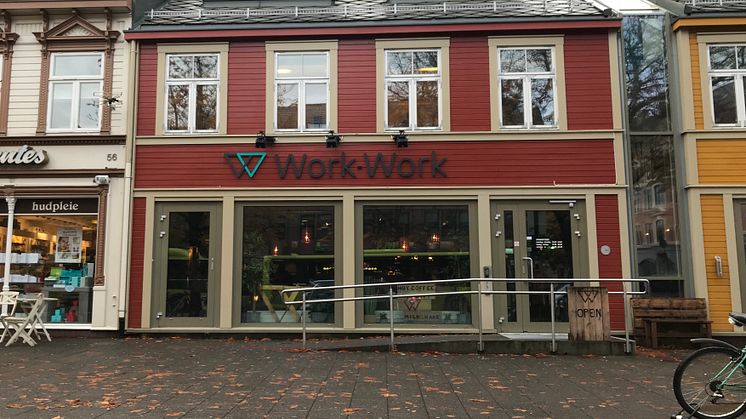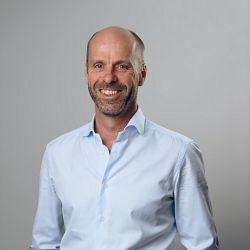
Blog post -
Nordic Tech Hot Spot: Trondheim
We went to Trondheim to explore one of the Nordic’s top tech hubs, built around the large university, with a dynamic ecosystem of innovation, research and startups. We also discovered how the salmon industry is creating an exciting industry around Aqua Tech, and how you can finance a VC fund from selling beer.
Did you know that Trondheim is the largest tech university campus in the Nordics? Some 39,000 students study technology and natural sciences at the Norwegian University of Science and Technology (NTNU)*, a grand academic institution focusing on IT, health, energy and ocean space. Add the Trondheim-based Foundation for Scientific and Industrial Research (SINTEF), the largest independent research organisation in the Nordics with some 2,000 employees active in digitalization, ocean space, health, energy and other areas, and you have an impressive Norwegian scientific cluster. It’s a Norwegian tradition for companies to outsource their research to academic institutions, unlike in Sweden, where industrials are often running their own R&D, says Haakon Skar from NTNU.
And just as Silicon Valley and its entrepreneurs, innovators and venture capitalists grew around the Stanford Campus in Palo Alto, Trondheim has emerged as an exciting Nordic tech hot spot built around NTNU and SINTEF. According to the annual Impello Report, there are over 500 technology companies with some 10,000 employees in Trondheim and over half of these are IT-companies. Between 50-60 new companies are started each year. Jon Ragnar Viggen and his partner Björnar Reitan at Impello, a networked corporate finance firm in Trondheim, emphasizes the importance of NTNU and SINTEF for research resources, commercializing innovation and producing a steady stream of startups. SINTEF is running its of own fund, SINTEF Venture, with funding from the European Investment Fund.
Trondheim is the headquarters for Norway’s largest VC investor, government-owned Investinor with NOK 4.2 billion under management. The city, situated on the Atlantic coast and number three in Norway by population after Oslo and Bergen, is also home to a large salmon fishing industry and the second largest church in the Nordics, the impressive Nidaros Cathedral. During the viking age, Trondheim was the capital of Norway until 1217.
The viking spirit is still present in Trondheim, as we discovered how tech entrepreneurs have sailed west and established companies in the US, but more frequently sold their businesses to American buyers. It’s a challenge in the highly innovative Trondheim region. Lars Iversen, the head of Technoport (an organisation supporting the local ecosystem and one of the sponsors behind Trondheim Tech Guide), thinks it’s important to grow Trondheim companies to a larger scale, create more of a critical mass, before they move or get acquired by a foreign giant. Norwegian entrepreneurs have less experience in scaling up, he says. Unlike their viking forefathers, are today’s Norwegian entrepreneur maybe more risk-averse? Or is it the curse of a university town? People come and go, and so do their companies.
For example, several successful semiconductor companies have been acquired by US groups. One of the most known is Falanx that was bought by ARM in 2006. We met with Borgar Ljosland, with background at NTNU as many other entrepreneurs, and one of Falanx’ co-founders. He confirms the impression that companies seldom reach a larger scale in Trondheim before being bought or moving out. He’s co-founded Work-Work, a well-known co-working space in Trondheim, and is now helping startups. Work-work is basically a bar selling beer, with offices to rent on top. But the most spectacular thing about this place, is that it’s really a VC fund called Kick-Ass, funded by the proceeds from the bar. This must be one of the best examples of a win-win situation we’ve ever heard. The more beer that entrepreneurs drink at the Work-Work bar, the more funding the Kick-Ass VC gets to invest in startups. The fund has so far invested in four companies. Now we’re looking to deploy AI and a data-driven approach to increase the funding (sell more beer), and maybe offer a new cryptocurrency based on the assets in the fund, says Borgar with a smile.
The largest private VC fund in Trondheim is Viking Venture, or it’s actually a growth capital fund nowadays, investing in later stage enterprise software companies. Most of the deal flow is from Norway, and leading tech clusters such as Oslo, Stavanger, Bergen and Trondheim, says partner Jostein Vik. He also confirms the view that the Nordics (or at least Norway) is not really like the US in terms of risk-appetite. The Nordics innovate and start companies, the larger international players acquire the technology. Of course, that makes an active capital market with both interesting deal flow and exit opportunities. Viking Venture makes 2-4 new investments and exits per year in the Norwegian enterprise software market, mostly to trade and financial buyers.
Tom Arnoy, the founder and CEO of Zedge (a mobile app company) is another Norwegian entrepreneur who successfully choose to sell most of his company to fund further expansion. In 2006 he sold 80% of Zedge to an US industrial investor, instead of raising capital from a typical VC, and the move was probably useful for establishing the company in the US market and creating more of an international traction and awareness. Zedge went public on Nasdaq in 2016. Tom is still running the company as CEO from Trondheim, and is also active in a group of angel investors in the local ecosystem with it’s mix of both institutional and private money. Other local investors include the family office of Byggteknikk and Salvesen & Thams.
Tom points to other important tech players in Norway like StartupLab in Oslo, Katapult Accelerator, Angel Challenge and the new Norwegian AI fund. He underlines the general image of Trondheim, saying that there are many startups – but they have to grow. Trondheim is an important tech region, but companies need more of a “hunger” to go big, he thinks. Tom wonders if there is a risk of too much money in Norway, and especially too much seed capital, since it can make startups “lazy”. There are actually few examples of Norwegian startups becoming global champions, before being sold to a foreign buyer.
That turns us to a Norwegian industry which is indeed a true global leader from a local base. The salmon business. And Norway owns the global salmon industry. The top-4 salmon companies in the world are all Norwegian, and the biggest is Marine Harvest (NOK 28 billion revenue), based in Bergen with almost one-third of the world’s total output. In fact, of the world’s 20 top salmon producers, 11 are based in Norway. SalMar, the world’s fourth largest salmon company (NOK 10 billion revenue) is headquartered in the small town of Kverva on the island Fröya outside Trondheim, and owned by the Witzöe family, locally famous salmon billionaires. However, the reason why we got interested in salmon is not because of the fish itself, but the technology industry growing up around it, “Aqua Tech”. From automated ocean-based salmon farms and sea lice technology, to enterprise software, digital communications, self-driving boats and battery research. It’s natural that innovations in self-driving cars happens in California, in a country of car-drivers, but as Norway is nation of shipping, they lead in autonomous boats. In fact, the SalMar family also runs Kverva, a large investment company exclusively focused on Aqua Tech and the marine sector. Another private equity investor focusing on the marine sector is Broodstock, purely investing in sea food.
From seafood innovators like AquaGen to the next generation of tech companies such as Norbit, Xethru and AIA Science, Trondheim is growing. The next step for Trondheim, according to Lars Iversen at Technoport, is to increase the critical mass from 500 to 1,000 tech companies and 20,000 employees. So there you go. Technology, startups, Aqua Tech, a beer-financed VC and friendly vikings. Trondheim is truly inspiring, and worth a trip. We’re looking forward to come back soon!
*Comparing NTNU and SINTEF with the Nordics, there are around 24,000 students at The Royal Institute of Technology (KTH) in Stockholm and some 10,000 students at Chalmers University of Technology in Gothenburg. At Aalto University in Finland there are 12,000 students and at the Technical University of Denmark (DTU) you’ll find tech 11,000 students. As an international comparison, there are around 16,000 students at Stanford University in California, counting all disciplines.

